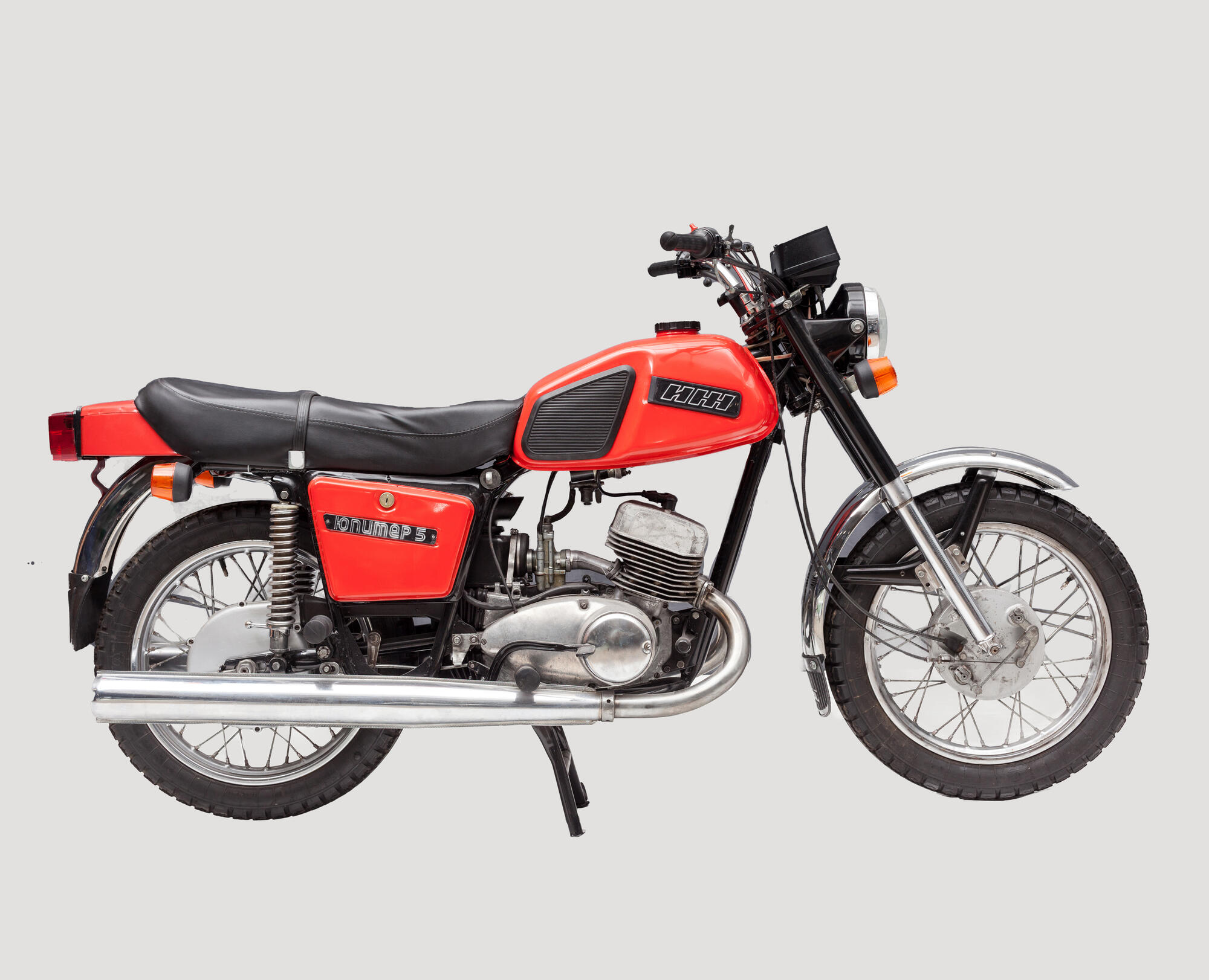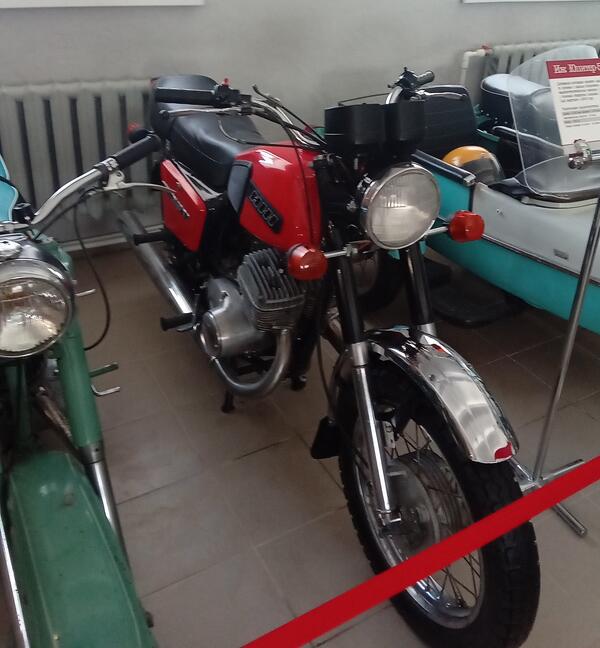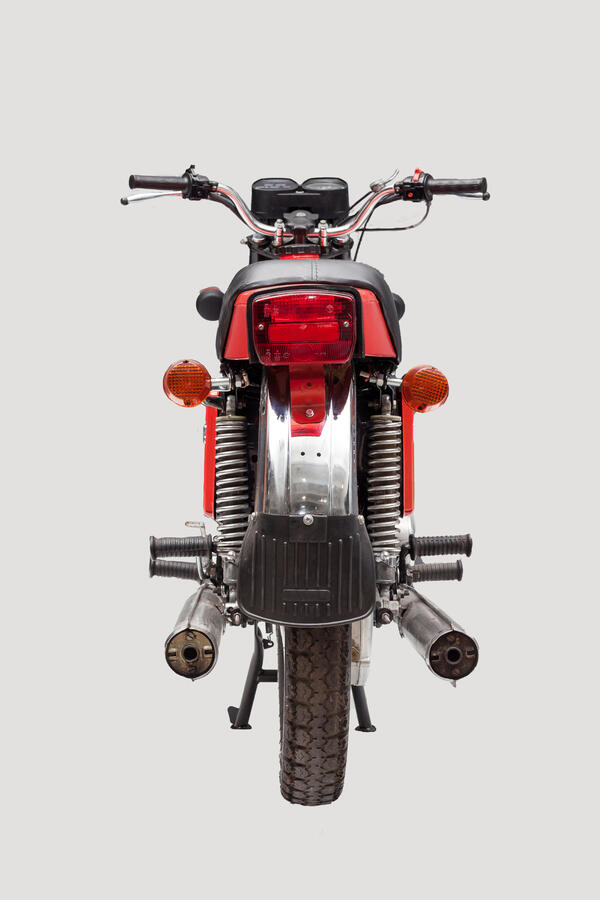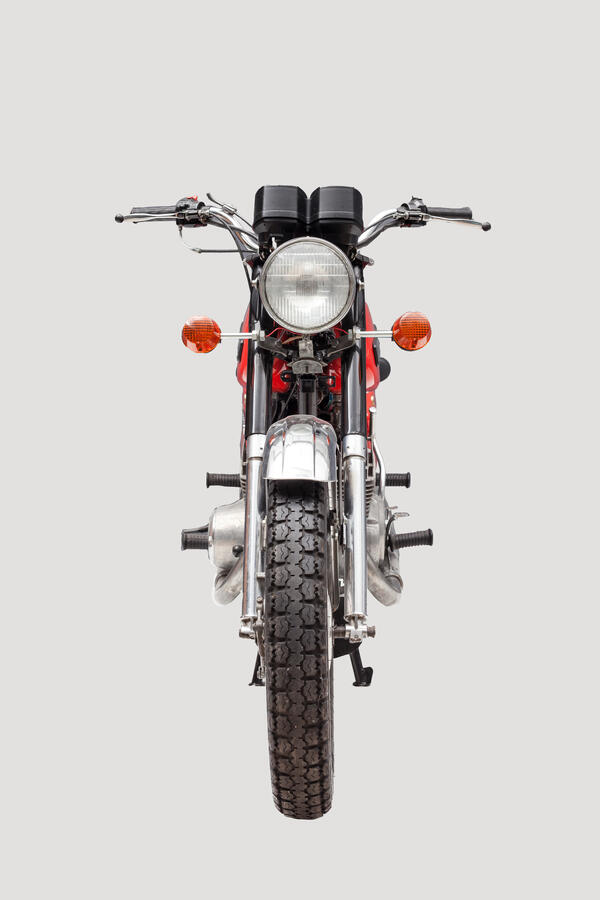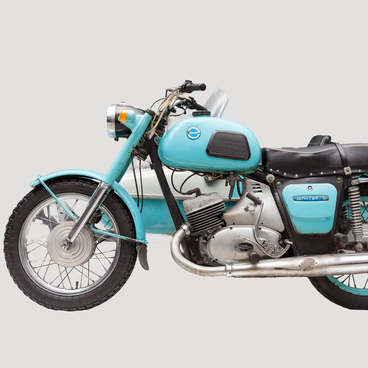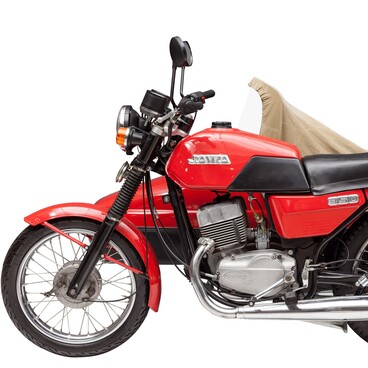The on-road mid-range Izh Jupiter-5 motorcycle (with the reference number 6.113-020-03) was designed for riding on roads with various surfaces. It was produced by the Izhevsk Machine-Building Plant between 1985 and 2008. The motorcycle weighed 160 kg and could be equipped with a sidecar for transporting cargo and passengers with a total weight under 99 kg, or a universal trailer for cargo up to 48 kg.
From the beginning, the Izh Jupiter-5 was equipped with an engine which capacity was reduced compared to the earlier Izh Jupiter-4 model — from 28 to 24 hp. At the same time, the torque was increased, and the cylinder design was changed, as well as the method for connecting the exhaust pipes to the cylinders. Moreover, the fifth Jupiter was equipped with an emergency starting button. The mounting system of the handlebar became more flexible.
This Izhevsk-made motorcycle could reach a maximum speed of 125 km/h. The fuel consumption was around 5.9 liters per 100 km. In the Soviet period, the Izh Jupiter-5 with a sidecar (5K-01) was sold at a price of 1,050 rubles.
Initially, the designers intended to create a motorcycle that would compete with the famous Czechoslovakian Jawa which could also be seen in the appearance of Jupiter-5. Both machines had their benefits and drawbacks, and eventually, the Izhevsk motorcycle proved competitively viable and had a strong fanbase.
However, the year 1991 marked the beginning of dramatic changes both in the country in general and in the motorcycle market. The Izh Jupiter-5 faced plenty of competition as a large number of used cars and motorcycles were imported to Russia. The employees of the Izhevsk Machine-Building Plant decided to try and improve the existing models.
The fifth models of both Izh motorcycles (the Jupiter and the Planeta) had cast alloy wheels, disk brakes, new electrics, and a new ignition system. The last modifications of the Izh Jupiter-5 had an index 03 in their name. They were equipped with a 25-hp engine and a liquid cooling system that helped to decrease the fuel consumption, increase the power, reduce the noise level and ensure trouble-free operation of the engine.
From the beginning, the Izh Jupiter-5 was equipped with an engine which capacity was reduced compared to the earlier Izh Jupiter-4 model — from 28 to 24 hp. At the same time, the torque was increased, and the cylinder design was changed, as well as the method for connecting the exhaust pipes to the cylinders. Moreover, the fifth Jupiter was equipped with an emergency starting button. The mounting system of the handlebar became more flexible.
This Izhevsk-made motorcycle could reach a maximum speed of 125 km/h. The fuel consumption was around 5.9 liters per 100 km. In the Soviet period, the Izh Jupiter-5 with a sidecar (5K-01) was sold at a price of 1,050 rubles.
Initially, the designers intended to create a motorcycle that would compete with the famous Czechoslovakian Jawa which could also be seen in the appearance of Jupiter-5. Both machines had their benefits and drawbacks, and eventually, the Izhevsk motorcycle proved competitively viable and had a strong fanbase.
However, the year 1991 marked the beginning of dramatic changes both in the country in general and in the motorcycle market. The Izh Jupiter-5 faced plenty of competition as a large number of used cars and motorcycles were imported to Russia. The employees of the Izhevsk Machine-Building Plant decided to try and improve the existing models.
The fifth models of both Izh motorcycles (the Jupiter and the Planeta) had cast alloy wheels, disk brakes, new electrics, and a new ignition system. The last modifications of the Izh Jupiter-5 had an index 03 in their name. They were equipped with a 25-hp engine and a liquid cooling system that helped to decrease the fuel consumption, increase the power, reduce the noise level and ensure trouble-free operation of the engine.
